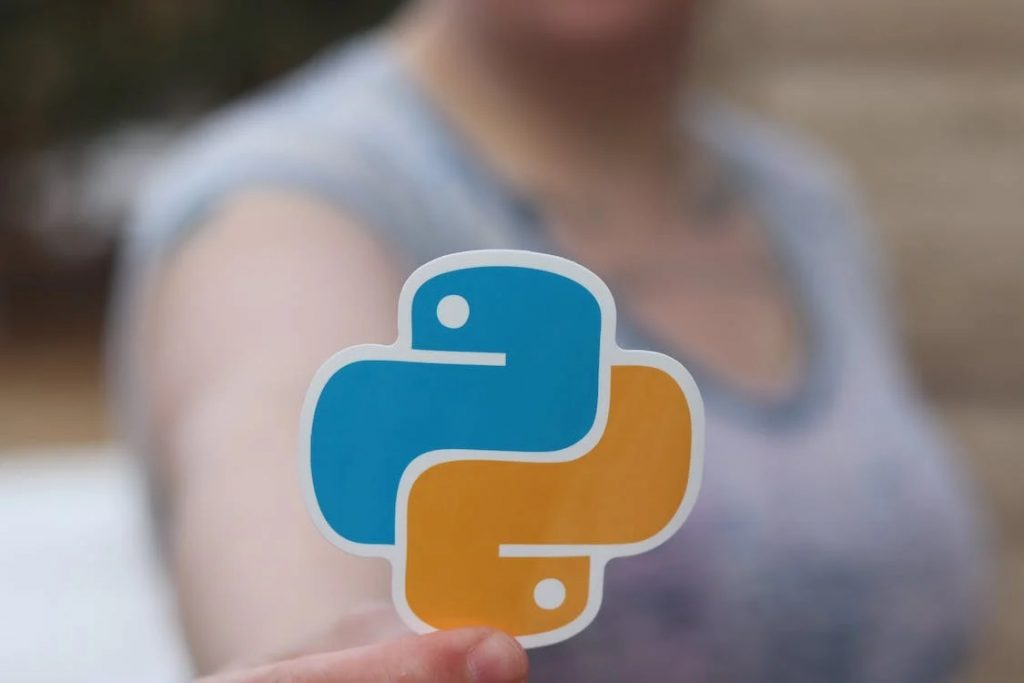In this article, I will talk about the difference between R programming language and Python programming language.

R programming language
R is a computer programming language that is used for statistical analysis. It is open source and free to use, popular among statisticians, data miners, and other data analysts.
R has proven itself as the most popular programming language for data analysis because of its ease of use, flexibility, and power.

Python programming language
Python is a high-level, general-purpose programming language. It was developed by Guido van Rossum in the late 1980s and has become the most widely used high-level programming language in the world. The syntax and semantics of Python are designed to support clear programmer productivity. Its design makes it particularly appropriate for Rapid Application Development (RAD) on Wall Street or Silicon Valley startups that need to build software quickly without sacrificing flexibility or security – even when working with external data sources like databases and files on disk drives!
Data analysis
In the field of data analysis, R and Python are both used for different purposes. R is used more commonly as a statistical programming language whereas Python can be used for machine learning or other data-processing tasks.
R is more specialized than Python in that it’s designed to perform statistical analysis on large datasets (i.e., those whose size exceeds 1 GB). This makes it easier to find patterns in large datasets and identify relationships between variables using statistical techniques such as correlation or regression analysis. It also allows you to visualize your results interactively using graphs that are easy to create with little code required!
R vs Python, the battle of data analysis.
R is a programming language that was developed by Ross Ihaka and Robert Gentleman at the University of Auckland in 1993. The first open-source version of R was released in 1995, followed by commercial versions starting in 1996.
Python is a general-purpose high-level programming language that can be used for many different kinds of data analysis tasks. It handles well large datasets, has built-in support for machine learning algorithms like neural networks, has excellent libraries for doing linear algebra operations such as matrix multiplication or Gaussian elimination on large arrays, etc., supports object-oriented programming through classes, etc.
What is R?
The software development environment and programming language R are used for statistical computing and graphics. It was originally developed by Ross Ihaka, Robert Gentleman, and Peter Langley at the University of Auckland in New Zealand to facilitate data analysis in their research on artificial intelligence. R can be used as a standalone application or integrated with other tools such as Gnuplot, GROMACS, Galaxy database backend, etc., providing access to advanced numerical methods for data manipulation, graphics generation, and data analysis for several statistical techniques such as linear models or classification trees.
R is a free software development tool by the R Foundation for Statistical Computing (R Foundation). It’s available under an open-source license that allows modifications while preserving attribution back to its original author(s).
What is python?
Python is a general-purpose programming language with high-level features. It was created in 1991 by Guido van Rossum, who is also the creator of the popular web server Python.
Python is an interpreted language that can be used as your primary tool for developing web applications and desktop programs. It offers a wide range of features, including support for object-oriented programming (OOP), dynamic typing, functional programming, and modules.
It has been used widely in many domains such as finance, data science, and machine learning, etc., making it one of the most popular languages worldwide
Packages in R and Python.
R’s packages are more mature and well-tested, while Python’s are easier to install. In fact, the number of packages available for Python is very small compared to those for R. The most popular package manager for both languages is pip (which stands for “personal package archive”), which allows you to easily install new software within your terminal or command line tool.
There are also many third-party repositories where you can find additional packages that you may not have thought about before such as numpy (an array data structure), sci-kit-learn (machine learning library), Matplotlib (a plotting library) and pandas (an analytical tool).
Community support for R and Python.
The community support for R is much larger than the Python community. For example, there are more books written about R than Python and more conferences dedicated to both languages. As a result, if you want to learn more about data analysis with statistics or machine learning, then it would be best to choose R as your language of choice because there will be many resources available for you to learn from.
Python is also used widely in the industry but has less community support compared with R. While there are many libraries available for Python developers (such as NumPy), they tend not to be as comprehensive or user-friendly compared with their counterparts in R package managers as CRAN or PyPI which provides access over thousands of separate packages built by various developers worldwide around the world every day!
Mobile Support for R and Python.
Python is a very popular programming language and is used by many data analysts. On the other hand, R has better mobile support and cloud computing capabilities than Python. However, the fact that R is more versatile makes it a better choice for some tasks than Python.
R has been around since 1993, while Python was created in 1991 by Guido Van Rossum (the creator of Python). Since then both languages have grown immensely in terms of popularity among students and professionals alike!
Python also has an advantage over R when it comes to speed: While both languages can be used for data analysis tasks like machine learning algorithms or statistical modeling techniques; they differ greatly in terms of performance when running large amounts of calculations on multiple machines simultaneously at lightning speeds with the maximum efficiency possible within their respective frameworks/libraries available today – i..e., NumPy vs Numpy vs Pandas etcetera…
Machine learning with R and Python.
You can use the R programming language to perform machine learning tasks. Machine learning is the process of extracting information from data and using it to make predictions about future events, such as predicting whether a customer will buy a product or predicting which customers will most likely purchase a specific product.
LearnVectorRegression() This package provides functions for linear regression and support vector machines (SVM). It also includes an implementation of a genetic algorithm that uses only one parameter at a time, namely the number of iterations in each cycle (or generation). The algorithms considered include ridge regression, gradient descent, and tabu search; they are used with various types of objects such as vectors and matrices, respectively
Essentially, it depends on the goals of your project, and how much you want to keep costs down.
R is popular and has a large community. Python is also very powerful, but it’s easier to learn and use than R. It also has a larger community than R, so you can get help from other people if you need it.
In general, Python is more powerful than R in many ways: it can be used for machine learning and data analysis tasks at scale; whereas with R you have to write your software or use open-source libraries (which may not be able to handle all your needs).
Conclusion
So, which one is better? Well, it depends on what you’re doing. If you want to learn more about R or Python and need a programming language for data analysis, then maybe Python would be your best choice. But if you just want something that’s easy to use and doesn’t require much knowledge about programming languages (or anything else), then R might be right up your alley!
I am a Tech geek and blogger, a seasoned freelancer, and my hobby is to enlighten my views and skills that will helpful for new inductions of the industry.